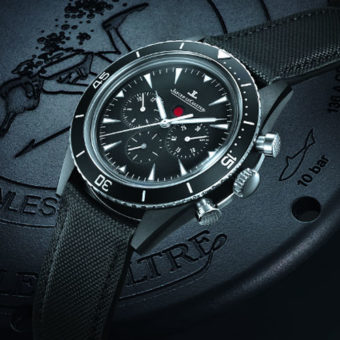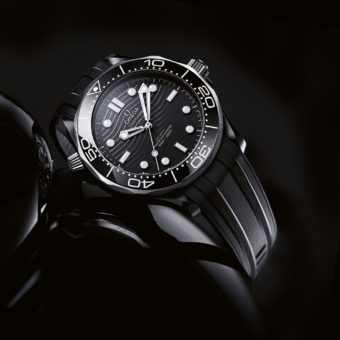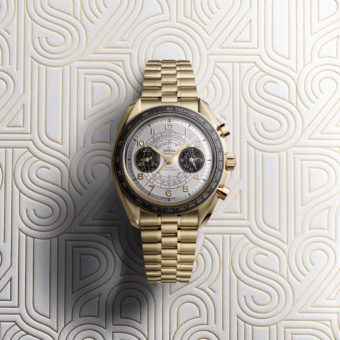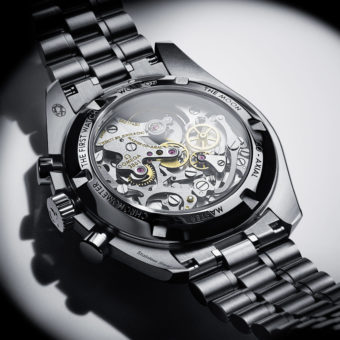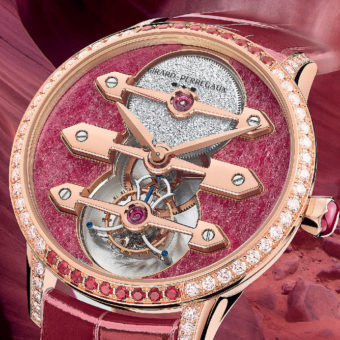
At Baselworld, a small group of watch publications, including WatchTime – the only U.S. representative, was granted an interview with Dr. George Daniels, the legendary British watchmaker and creator of the co-axial escapement. At 84, Daniels still plies his trade, developing technology for Omega and creating his own watches, most recently with his former apprentice, British watchmaker Roger Smith. What follows are excerpts from the interview.
Q: Did you ever foresee that your idea, the co-axial escapement, would become the heart of a major brand [Omega], as it is today?
A: I always hoped so, because it was the result of a great deal of hard work over many years.

Q: As an English watchmaker, do you take any particular pride in creating an escapement that has been so significant in the Swiss watch industry?
A: It shouldn’t surprise that it’s an English invention. The English have always been concerned with timekeeping because they’re surrounded by water, and they have to navigate. To do this, they need accurate timekeepers, and the most accurate timekeepers were invented by the English. We’re very proud of that and we try to keep up the tradition. My duty is to make sure that expertise doesn’t [fade away]; it’s got to increase. I am concerned not with watchmaking but with horology, which is a specific type of timekeeping, and with chronometry. The people who worked in the early days of the development of mechanical timekeeping were all artists as well as inventors, and many were born in Britain, I’m pleased to say.
Q: Do you still make watches under your own name with the co-axial escapement?
A: Of course, and I use only co-axial escapements in them. It makes all other escapements old-fashioned. I have also invented two other escapements that are now coming onto the market, so there should be plenty of horological activity in the next 10 years.
A Daniels wristwatch

Q: Do you see any British watchmakers today who are particularly inventive, or looking toward the future as you did with your invention?
A: It’s always a short list but there are several young men who are brilliant. And they are carrying on the tradition of British watchmaking. So there is an obvious future, but how [large a role they will have in the watch world], we don’t know.
Q: As one of the most famous British watchmakers, what have you done to keep the tradition alive in your country?
A: Well I invented three new escapements and 105 watches, all without any assistance. Now we have a new young team coming on, and I think they will do great things. We [the British] haven’t done too badly.
A Daniels pocketwatch

Q: What can you tell us about these two new escapements?
A: They are conceived essentially to run without lubrication, because lubricant is very bad for the escapement. It’s all about progress. I’ve been wearing this watch [shows the watch on his wrist], with the co-axial, for 20 years. I have a Patek Philippe, even thinner than this, that I fitted with it 35 years ago, and it’s still working perfectly. The only thing that’s worn out is the winding gear. I call that progress. I’ve stayed in horology because I wanted to see progress and I am getting what I want.
Q: Do you believe that innovations and new technologies like silicon can bring something to watchmaking?
A: I don’t believe they’re necessary, no. There is no evidence that they are. Clocks and watches have been made of brass and steel for a thousand years, and they’re still running perfectly. We don’t need these things. I don’t accept these materials as being the least bit useful in haute horologie. In fact, you only have to look at the drawings, see the shapes of the components and how they engage with each other and you’ll realize that they [will not last] for long periods. Of course, manufacturers use such materials to improve the performance of a watch, but it doesn’t matter how much attention you give [to the material], if the escapement doesn’t work without lubricant, it isn’t going to get you anywhere at all. You might as well stay with the old-fashioned.
Q: Aside from your own inventions, do you feel there has been anything developed in horology since your career started that has improved the art of making watches?
A: It depends on the date… there are tourbillon watches that will keep better time than non-tourbillon watches. But here I’m talking about pocketwatches. Tourbillons in wristwatches aren’t very useful for anything, really. [The accuracy is] all dependent on the hairspring and the escapement. Breguet invented the tourbillon, and you can’t criticize him, because Breguet was a genius.
Q: Are there other inventions that you would still like to develop for the watch industry?
A: I think I’m a broken reed, a spent force; I can’t think of anything new to invent. It’s a very tight field and it’s not easy to think of new ideas. One always tries, of course. My chronograph is one of the novelties this year; it’s very simple. It works well, but it’s not significant. The real question is, how does one now amuse oneself?
Q: What are your opinions on some of the modern, innovative but odd timepieces, some of which don’t actually show the time? Are they watches or just machines?
A: I’ve never really thought about it. I don’t know, really. If it keeps time, it’s a watch, I suppose. Congratulations… that’s a question I’ve never heard before. I’ll have to give it some thought.

